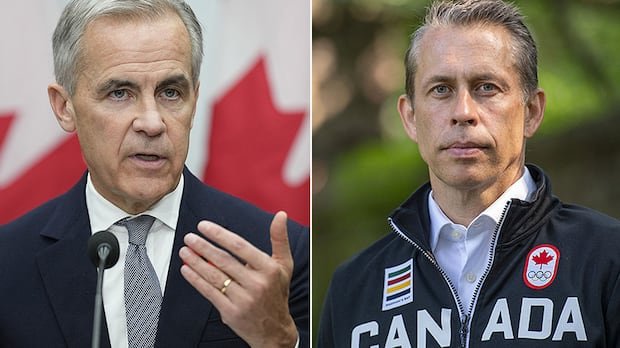As Canada’s youth continue to struggle with a challenging labor market, the federal government has outlined its plans to address a crisis that has produced some of the highest youth unemployment rates in more than a decade.
The plan focuses on job placement and creating summer jobs for students, and more investments in vocational training programs that the federal government says it hopes will make it easier for young people to find jobs, including in the business and climate-related sectors.
“For young people, this budget is made for you,” Finance Minister François-Philippe Champagne said during a speech Tuesday before presenting the budget in the House of Commons.
Young people tend to be the first and most affected when economic conditions are weak. In the years since the pandemic, inflation has skyrocketed, raising the cost of living. Population growth has also skyrocketed (especially among the student-age cohort) outpacing the number of jobs available in recent years, although growth has leveled off this year.
“There’s a big shift in terms of expectations about what someone’s life will be like, and that’s a big challenge for young people,” said Rob Gillezeau, assistant professor of economic policy and analysis at the University of Toronto.
Now, the country teeters on the brink of a recession as a bitter trade war with the United States causes layoffs and reduced hiring and investment. And that doesn’t bode well for younger generations, Gillezeau added.
“Most recessions are relatively short-lived, but if this one is driven by completely insane economic policy by Americans that appears to be trying to harm our country, the economic damage can be much longer-lasting,” he said.
“That will have a disproportionate impact on young people.”
Summer jobs, business programs for youth.
“Overall, when I look at this in this budget, I think what they’re trying to do is signal that they’re aware that young people are the hardest hit right now,” said Rebekah Young, vice president at Scotiabank Economics.
However, “when we think about this transformation that the Carney government is trying to make… I think they’re going to have to dig deeper in terms of how [are] “education and university systems equip younger Canadians to enter and remain in the workforce.”
For its Student Work Placement Program, the federal government plans to set aside $635.2 million over three years, starting in 2026-27, for 55,000 “work-integrated learning opportunities” (essentially vocational training and short-term job placements) for post-secondary education students.
It is also proposing $594.7 million over two years for the Canada Summer Jobs program, an initiative it began exploring a few years ago and which it says will support 100,000 youth jobs next summer.
Among the more specific proposals is a “Youth Climate Corps,” a paid skills training program for young people in which they will be “trained to rapidly respond to climate emergencies, support recovery, and strengthen resilience in communities across the country.”
The program allocates $40 million over two years to Employment and Social Development Canada, although It is unclear how many young people will benefit.
The government says it will also allocate $307.9 million over two years to a youth employment and skills strategy. The funds go toward jobs, training and other supports starting in 2026-27, including tutoring, transit and mental health counseling.
The initiative gives money to various government departments that then distribute it to programs for young people who face “employment barriers,” which could include groups such as women and racialized people.
The budget also includes a previously announced plan to pump money into trades training, which is not necessarily aimed at young people but could benefit them.
That portion allocates $75 million over three years to expand union training in the Red Seal Trades, a list of designated trades that includes jobs such as carpentry, heavy equipment operation, blacksmiths, machinists and plumbers.
“I think they’re going to have to go deeper”
While the programs could address some issues facing young people right now (such as providing a clearer path to entry-level jobs, which some experts fear could be replaced by artificial intelligence), the best thing the federal government can do for young people right now is avoid a recession, Young said.
“We’re in a trade war, there’s widespread uncertainty. Fortunately, there’s not a lot of mass layoffs, but there’s not a lot of hiring either. So, especially young people looking to integrate into labor markets, they’re having a really tough time,” Young said.
“They just came out of some difficult years, even when we had explosive population growth that also made it very difficult to define employment. So I think I interpret this as a sign [that] “They are trying to be receptive.”
Budget lines aimed at youth unemployment amount to “small promises,” said Paul Kershaw, a professor at the University of British Columbia and executive director of Generation Squeeze, which he says “reinforces” the lack of concern for the struggles faced by younger people.
“I would certainly like to see a budget in the future that tries to find a better balance between new dollars later in the course of life versus new dollars for young people at this critical time as they try to start their careers, start families and make our economy more productive,” he said.
Generation Z graduates ages 15 to 24 face the highest unemployment rate the country has seen in decades, outside of the pandemic. CBC’s Paula Duhatschek looks at what’s behind the surge and what it could mean for an entire generation of Canadians.
The government is sharply reducing admissions of temporary workers, which some economists say contributed to a youth labor market in which more people competed for fewer jobs. But the uncertainty of the trade war has added another layer of complications.
“Certainly in theory it will help, but we’re also seeing that jobs just aren’t growing right now because of that uncertainty,” Young said. “So in theory it will eliminate some of the competition for those jobs, but I would also say that the government should think: how can we get young people into other jobs?
“I think it is the [Youth Employment and Skills Strategy] and [the Student Work Placement Program] “That could have a more significant impact on young people, by having that longer-term vision.”









